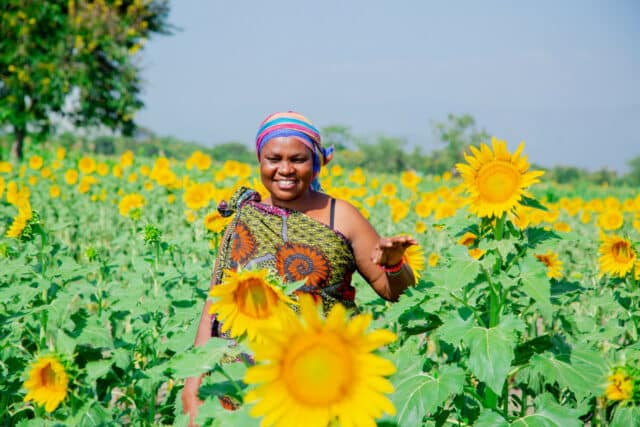Expert view
14 December 2012
Postcard from Kenya – The hunger trap

Photo: a Kitui farmer uses mulch to line zai pits built with the help of Farm Africa.
By Jonathan Finighan
This might seem pretty unremarkable, but Mwangangi is the 64th farmer I’m meeting in Kitui, so I have seen a lot of farms. And, unlike others, this farmer hasn’t tilled manure into the soil to maximise the benefits for fertility.
Then I see more signs that this farm hasn’t been touched for a while. We find well-made zai pits (shallow structures dug from the soil to capture water), 40 in total, but the maize seedlings planted inside the zai pits are dwarfed by fleshy weeds. And the last few nights of heavy rain are digging gullies through Mwangangi’s fields. The soil surface is being reduced to tiny rocks and pebbles as the topsoil is washed away.
This farm looks abandoned, like somebody left in a hurry.
Mwangangi isn’t here. His wife says he has gone to Nuu town. We get back on the motorbike and find him at the tiny petrol station fixing a puncture on a very bald car tyre. Mwangangi tells us that he ran out of maize last week, so he decided to come to town to find work. He has a lot of work to do on the farm to prepare for the coming rains, but he said, “When your children are hungry you just have to do something about it.”
Like all the farmers I’ve met in Kitui County over the last two months, Mwangangi and his wife make enormous sacrifices for their future. They even decided to sell their bulls recently to keep their children in school. This is a big decision – without bulls, they have to till the farm by hand. That’s why we saw all the manure on top of the soil.
Mwangangi’s situation is an example of what you could call a hunger trap: this is a vicious cycle where the need to feed your family today makes it almost impossible for you to invest money and energy in your farm so you can get a good harvest and feed your family next year.
Mwangangi tells us that Farm Africa’s project has really helped them: the only food he and his wife harvested this year came from the zai pits introduced by Farm Africa – the poor rainfall spoiled everything else. They also used the Farm Africa training to terrace part of their farm and stop soil erosion.
Zai pits and terraces are kind of “investments” in farms that help farmers like Mwangangi to get out of this hunger trap, by improving their yields and giving them more food.
– Jonathan Finighan is an Evaluation Researcher at Farm Africa. He recently spent three months in Kitui, Kenya assessing the impact of Farm Africa’s climate-resilient farming project.
Read recent post cards from our series, including Jonathan’s postcard from Kitui.
Find out more about our climate-resilient farming project.




